TELEVISION
A recipe for love, murder and global success for Tannie Maria
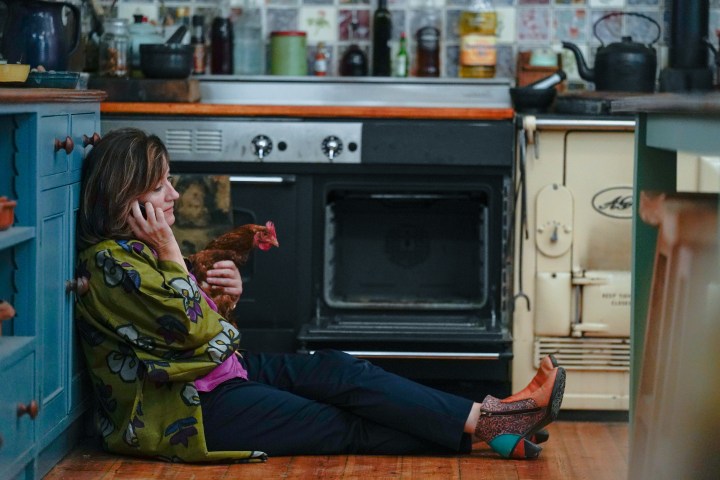
There’s more to the new television adaptation of Sally Andrew’s first Tannie Maria novel than merely turning it into a TV show. It has the potential to be a South African achievement on the global television stage.
Halfway through watching the first episode of Recipes for Love and Murder, the new TV series now on M-Net and soon to be released to the wider world, I was worried. What were they thinking? How could Tannie Maria be Scottish?! What the actual…? But it was late at night. I was sleepy. I turned it off and went to bed, dark thoughts in my head of Tannie Maria in a kilt, gorging on haggis and tossing cabers around a Karoo town as I drifted into dreamland.
Next morning I started it over again. One by one, pennies dropped. Things started to make sense. By the end of the episode, I loved it for a variety of reasons, and they had answered, satisfactorily, my concern about the casting and placing of that central character without whom there is no story at all.
Now that I have seen a couple more episodes, I’m a fan. I can’t wait for the rest, and it was great news to hear from producer Thierry Cassuto on Wednesday, during a Zoom interview, that plans were already being made for a second season.
So I’d like to offer this advice for South Africans who (like me at first) feel they couldn’t possibly accept Tannie Maria as being Scottish:
- Chief point is this: accept that it is an adaptation, for a world audience, and not merely an attempt to turn a book into a TV series. They’ve only taken the essence and written entirely new material from there onwards. And very well too.
- Understand that this is an international production, aimed at viewers all over the world (it has already been sold to many territories, with more to come, and you will find it on Acorn TV later in 2022). It’s a 10-episode series by Both Worlds for M-Net, Acorn TV and Global Screen aimed at a worldwide release.
- Place it in the world of television. See it in the following context: Have you ever seen Doc Martin? Death in Paradise? The Durrells? That’s the genre that our Tannie Maria (yes, our) should be seen in. They’re all highly entertaining series, very successful season after season, and they have in common with Tannie Maria some very lovable and saleable elements: they have a sense of place (in turn, a quaint English coastal village, a Caribbean island, a village in Corfu) that is in itself a “character” in the stories. They have plenty of local idiosyncrasies; well-drawn characters we grow to love and to “know”; pithy, witty writing that had me chuckling happily many times, and a delicious sense of small-town madness. Not least, it has a shed load of feel-good moments, considering it’s about murder (and food).
- Consider that the world, much of which may not have even heard of the Karoo, will get to know it through this show. I have never been to Corfu, but it registers with me ever since I watched The Durrells. The Karoo, our Karoo, is as much a character in the series as Tannie Maria herself. Instead of choosing a known town, they have invented a Karoo town called Eden (there is an Eden district, as it happens), and as a Karoo kid myself I know that everything about their “Eden” rings true, from the familiar Victorian afdakkie houses and butchery to the gossipy interplay between characters who have long been in one another’s lives, and the lovely terrain that makes me think: “home”.
- Look at those production values. They deserve us to be proud of this achievement. The writing, direction, casting, cinematography and much of the costuming are exemplary (I’m in two minds about editor Hattie’s suit, but Tannie Maria’s dress is almost a character in its own right). I have the odd quibble, but that would apply to any TV series I watch. Every one. Nothing is perfect.
- Consider the reality of the Karoo. There’s a Presbyterian church in almost every town. Scots (and English, German etc) are in the ancestry of a great number of Karoo towns. My parents had broad Yorkshire accents. In my Karoo town, I have a vet of Scottish ancestry on his dad’s side and Afrikaans on his mom’s. It’s a thing and it’s totally credible that a Karoo-born girl could return as an adult, having inherited the old Karoo farm, having left as a kid. Of course, she’d have a Scots accent. It’s only TV, a choice was made, and they’ve made it work. Simple as that.
- See it as an entity in its own right, rather than as “the TV version” of the first Tannie Maria novel. Head writer Karen Jeynes told me this week: “Someone described the TV series as the ‘sister’ to the books. Like a parallel universe version of the books.” Producer Thierry Cassuto said: “The novel and series can live in harmony. Most people are quite surprised and pleased when they see the show.”
- Consider that we may have a global South African TV success on our hands. One to be proud of. Come on, get on board. I sure have done.
I spent an hour on Wednesday in the Zoom company of Thierry Cassuto, the producer and founder of Cape Town-based Both Worlds Pictures, who is the key force behind the show, and Karen Jeynes, Both Worlds’ head writer. Thierry set the background scene.
“Karen Jeynes, our scriptwriter, raised the idea of going into high-end productions for M-Net. We looked at pre-existing material and a friend, Julian Friedmann from Blake Friedmann Literary Agency), sent me a novel by Sally Andrew. It was perfect for my holiday — charming, well-written, a wonderful protagonist in Tannie Maria.”
They optioned the rights and in discussions with their UK partners, it was decided, right at the start, that for it to work it had to be accessible to a global audience. “We started developing it; Karen did a first draft and that was Recipes for Love & Murder. We then had to get funding — M-Net plus Acorn TV and Global Screen — and it took about two years to put together all 10 scripts for the first season. When our funding came through we went back to (director) Christiaan Olwagen and Vicci Turpin (DoP).”
The hiring of Turpin was a coup, because the cinematography is simply superb. The direction is equally excellent. The recipe-and-letter sequences of Tannie M baking for the odd bods who seek her love advice are deliciously funny and the food scenes great to look at.
The central part was cast mid-pandemic. The core role of Tannie Maria went to Irish actress Maria Kennedy Doyle, but only after they had waded through 100 “self-tapes” from British actresses hoping to win the part. So, we may well say, but what about all the South Africans who could have done it, but that thought is obviated by the decision that had been made to have Tannie Maria as a Karoo-born woman who returns to inherit a property. (Doyle is well known to viewers, having played Patsy in Father Ted, Catherine of Aragon in The Tudors, Vera Bates in Downton Abbey, Siobhán Sadler in Orphan Black, and Jocasta Cameron in Outlander.)
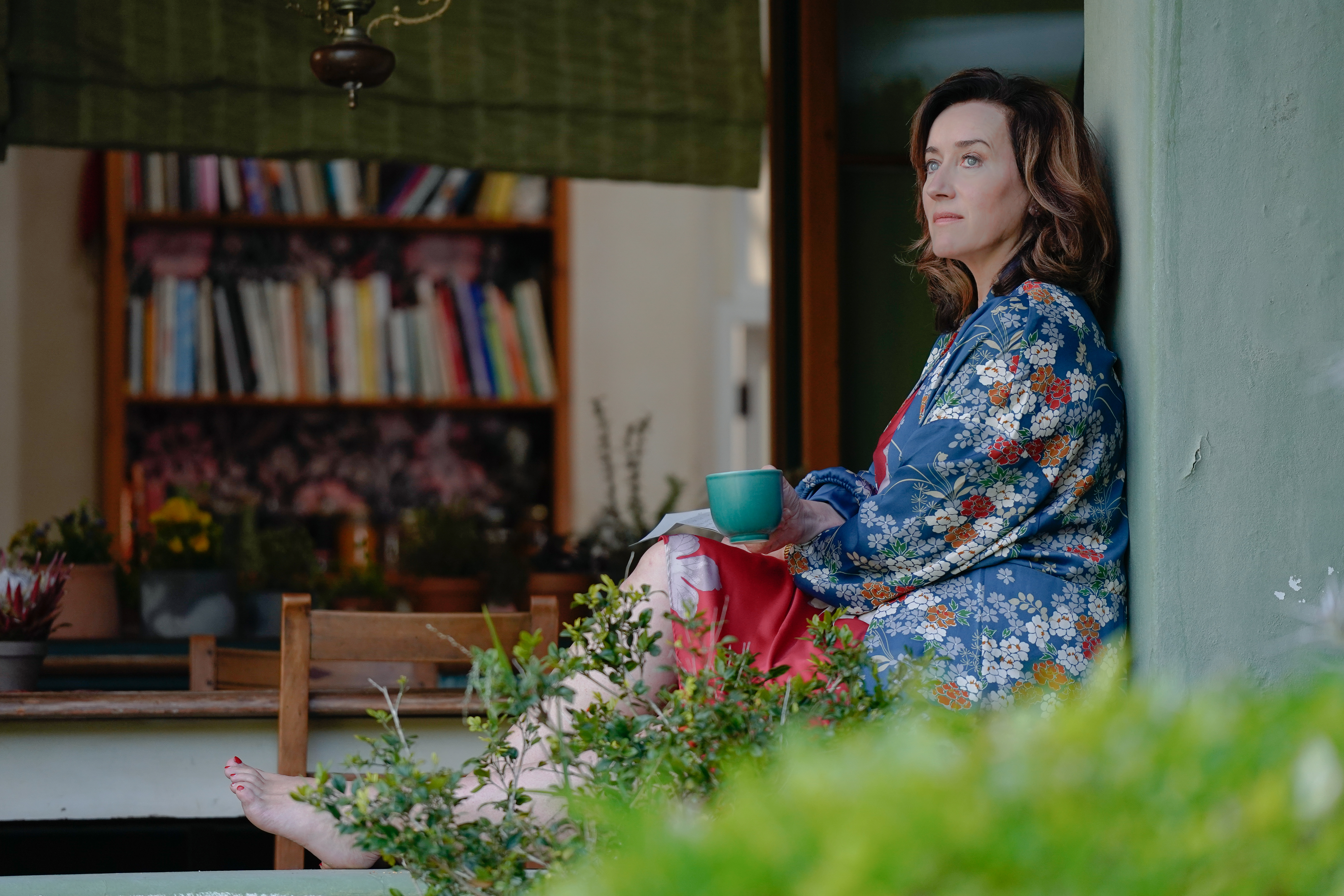
Maria Kennedy Doyle in “Recipe for Love and Murder”. Image: Supplied
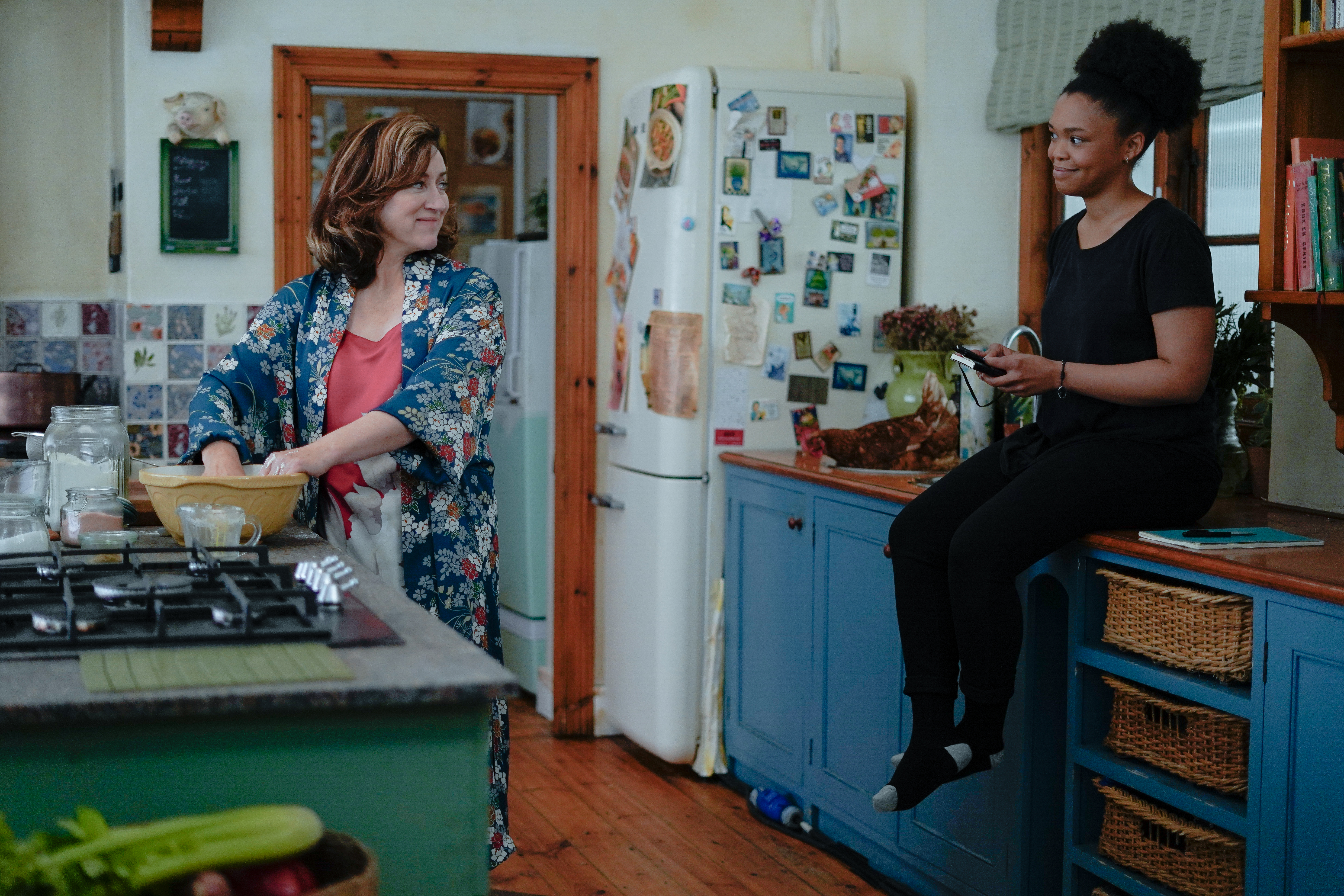
“Recipe for Love and Murder”. Image: Supplied
I raise the matter of the casting of Maria as Scottish, saying that it will be a sticking point for many South Africans and that undoubtedly many of them will not be won over, as I was.
“We decided we wanted to cast a Scottish woman in the role of Maria because we were told to make the show have scope, have legs for a larger audience,” Cassuto said. “We wanted to be able to do 10 episodes and another season after that so we wanted to tell a lot of background story. We used some of the story that Sally (Andrew) had written about Maria and grew stems on it for the international market.”
Head writer Karen Jeynes has a background in the Karoo and is the child of Afrikaans and Scottish parents. “In Sally (Andrew)’s story, Maria Purvis (Tannie Maria) had a British father and Afrikaans mother,” she said. “She was somewhat of an outsider, part of the Karoo town and not part of it. We took it further and said she was born in the Karoo, in the small town of Eden, and went back to Scotland when she was a small child. She returned to the town after her husband’s death to inherit the farm (in fictitious Eden), where she writes an advice column in the local newspaper.”
Other than Maria, every other character in fictitious Eden is South African (though there are Scottish characters, in passing, in a growing back story which seems full of intrigue; some scenes were filmed in Scotland). “We made it a 100% SA production with the exception of Tannie Maria who plays the lead character,” Jeynes said. “I studied adaptation academically and you have two audiences with an adaptation, those that know the story well and those that don’t know it at all. I understand that our adaptation isn’t going to be right for everyone.
“I am very sympathetic to people who have read the books and have their own Tannie Maria and their own Sergeant Kannemeyer. Because I know how we create images in our mind about characters. We had to read and love the books and then we had to put them aside and make a TV series.”
Casting was done with great care, and took time. “I have a deep love of the Karoo and spent a lot of time there and in any small town in the world you get characters,” Jeynes said. “We had Sally Andrew’s characters and then we have some remarkable actors in South Africa. We had a long casting process to try and find the right people who had something unique about them.”
I remark that the show doesn’t shy from vernacular, so foreign audiences unfamiliar with South African dialects can keep pace with the nifty subtitles. One incidental character describes someone they fancy as being “kak lekker”, which is translated in subtitles as “shit hot”.)
“We wanted to keep the spiciness of language alive and we had long debates about how to do it. We want to hold onto the musicality of the Karoo language,” Jeynes said.
The location for Eden was Prince Albert, not Ladismith where the books are set. “We needed a small town that was well looked after and we painted the town substantially,” Jeynes said.
I remark that one of the best things about the show is the cinematography, and the superb recipe sequences, which interplay in a parallel narrative with incidental stories of the lonely hearts characters Maria is trying to help.
“Vicci Turpin (the Director of Photography) has an amazing way with light and together with Chris they’ve created a Boer Almodovar aesthetic,” Jeynes explained. “That ties into the food, food is such an important part of the show. We want people to connect with it visually. We’re not making a cooking show but we want it to be part of the world, for people to connect.”
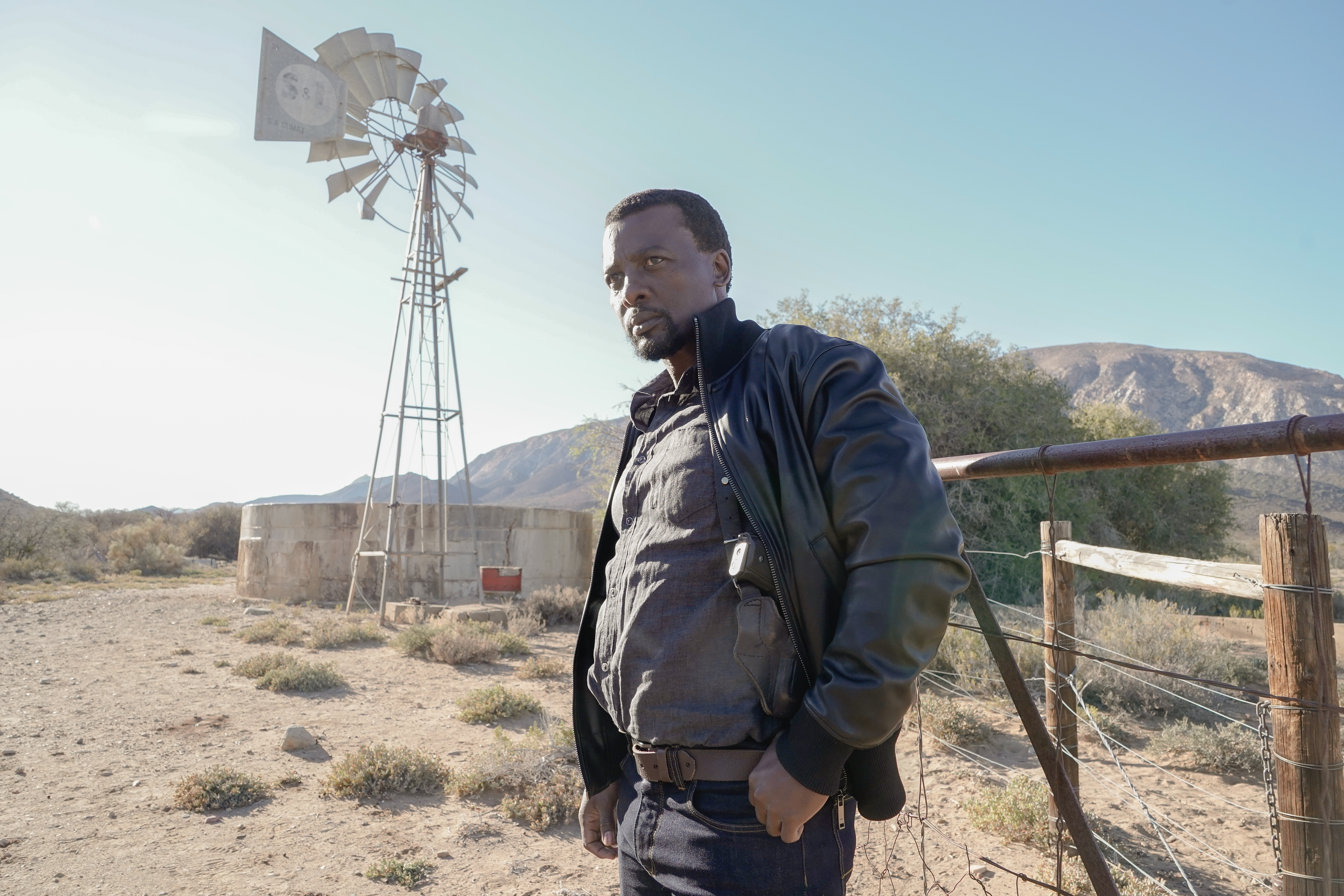
Tony Kgoroge as Detective Sergeant Khaya Meyer “Recipe for Love and Murder”. Image: Supplied
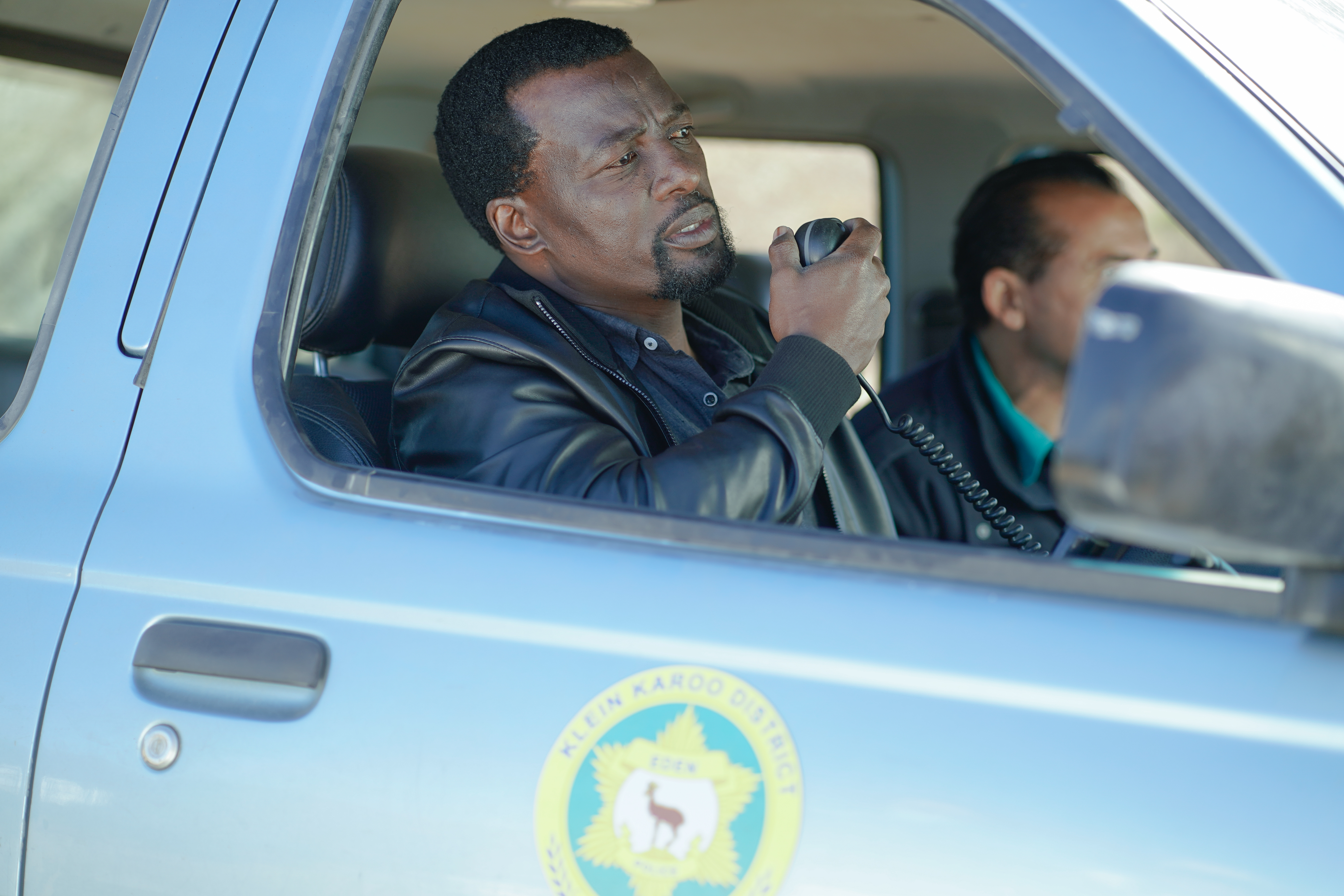
Tony Kgoroge as Detective Sergeant Khaya Meyer. “Recipe for Love and Murder”. Image: Supplied
Cassuto added: “Some of the recipes that we use in the show come from Sally’s books and other recipes were developed by our team, led by Mynhardt (Joubert) who lives in Paarl. He was testing recipes and a recipe is released weekly, after the show.”
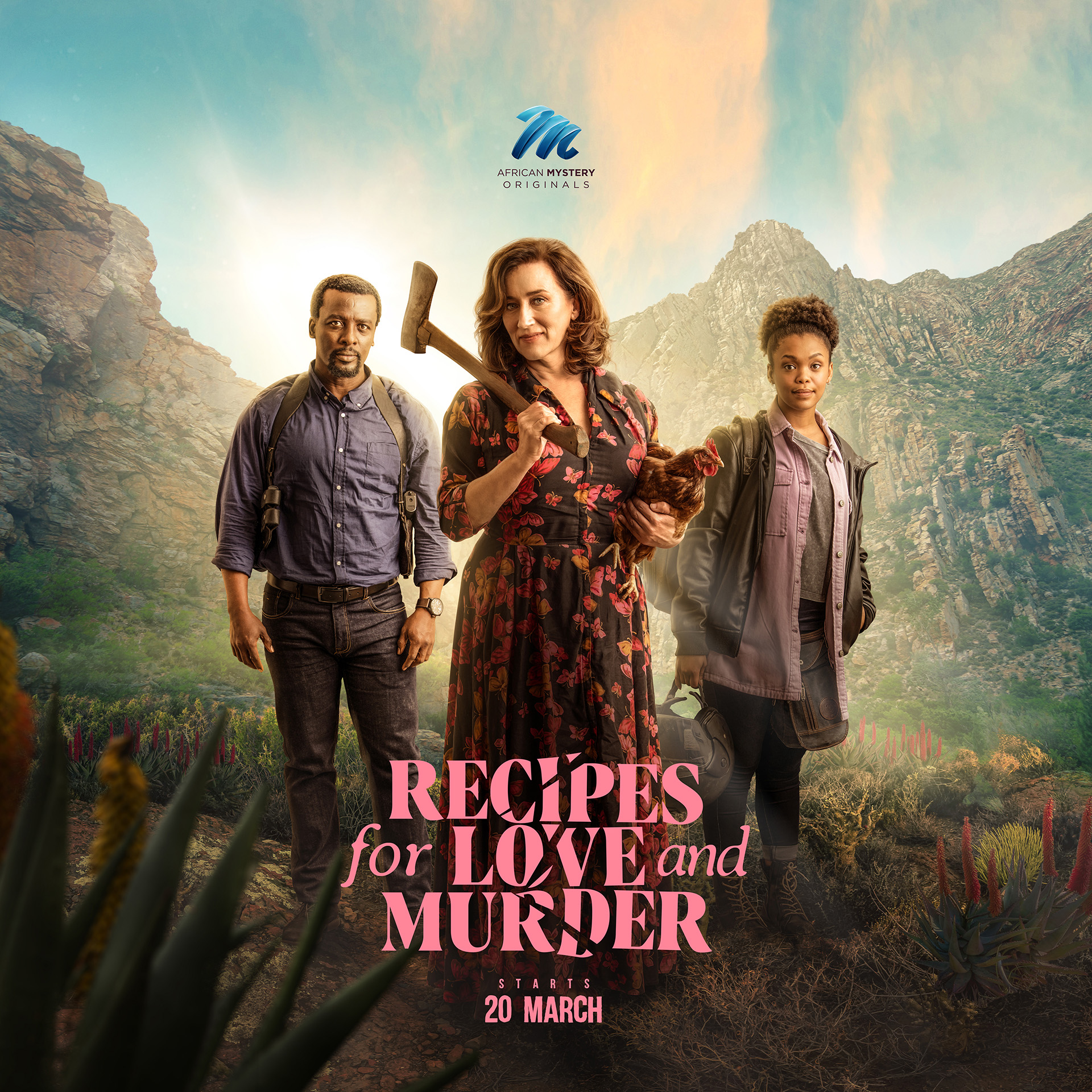
“Recipe for Love and Murder” poster. Image: Supplied
The series, despite my early concerns, turns out to be built on what looks like a winning recipe for success. I sure hope it bears fruit for those involved, but more than that, for any South African who would love to be proud to have our own TV hit in the wider world. DM/ ML
Tony Jackman was one of South Africa’s first television writers throughout the 1980s when he covered the medium for the Argus Group. These days he lives in a small Karoo town where he writes recipes, for love, but not murder.
















 Become an Insider
Become an Insider
Comments - Please login in order to comment.